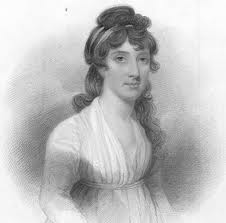Annotation:Miss Murray of Auchtertyre's Strathspey
X:1 T:Miss Murray of Auchtertyre's Strathspey C:"by John Bowie" M:C L:1/8 R:Strathspey B:Gow - "Complete Repository, Part 1" (c. 1799) Z:AK/Fiddler’s Companion K:F c|(A/B/c) f>c Td>cfc|(B/c/d) f>c Td>cd<f|(A/B/c) f>c (d/e/f/g/) a>g|{g}f>d {d}c>A {A}F2F:| A/B/|c<Fd<F c<Ff>d|cF TcB/A/ {A}G2 GA/B/|c<Fc>A f<ag<a|{g}f>d {d}c>A TF2 FA/B/| c<Fd<F c<Ff>d|cF {d}cB/A/ {A}G2 GA/B/|c<Fc<A f<ag<a|{g}f>d c>A TF2F||
MISS MURRAY OF AUCHTERTYRE/OCHTERTYRE'S STRATHSPEY. AKA and see "Lady Portmore's Reel," "Mrs. Murray of Archentyre's Reel." Scottish, Strathspey. F Major. Standard tuning (fiddle). AAB. "Miss Murray of Auchtertyre" was composed by John Bowie (1759-1815) of Perthshire, and published by him in 1801, although it was published earlier by others in both reel and strathspey settings. The melody was published twice in London in country dance collections by the firm of Preston & Son; first in 1798 as "Mrs. Murray of Archentyre's Reel" (which is close to Bowie's title), and again in 1800 as "Lady Portmore's Reel." It was also published in London in an identical reel setting by William Campbell in his 12th Book with a title similar to Preston's, "Mrs. Murray of Aychtentyre." Strathspey settings of the tune were printed by the Gows in Complete Repository, Part 1 (c. 1799) as "Miss Murray of Auchtertyre's Strathspey," where it is attributed to Perthshire fiddler-composer John Bowie (1759-1815), a setting that appears in subsequent tune anthologies. Confusingly, Bowie had earlier composed another, completely different, strathspey with the very similar title "Miss Augusta Murray Ochtertyre's Strathspey," which he published in Four New Tunes around 1797.

Miss Murray of Auchtertyre was Euphemia Murray of Lintrose, a cousin of Sir William of Ochtertyre. She was an accomplished woman and an amateur composer herself, with at least one composition, a slow strathspey, published by the Gows (Fifth Collection, 1809) –- see “Rosabell.” Poet Robert Burns was struck by her teenage beauty when he visited Sir William Murray at Auchtertyre in 1787 and composed a famous ode in her honor, “Blythe was she.” ‘She’ was not amused, by one report and did not care for it (a Smyth descendent says she called Burns a "drunken young ploughman", tore up the manuscript, and did not allow it to be mentioned in her presence) [1]. Beautiful she was, however; and famous enough to be feted as the ‘Flower of Strathmore’, her beauty toasted at gatherings. Another account differs in its report of her attitude toward the poet, suggesting she was rather warmer towards him:
[She] happened to forgather with Burns during on of his northern tours, and her affability and beauty charmed this lyric from him.
Euphemia married David Smyth, Lord Lethven, a Scottish judge, whom she met when she was giving testimony in court (according to an account by Smyth). Apparently a scandal had arisen in the Murrays of Auchtertyre, and she was called as a witness, as she was intimate with the family. "Her beauty and modesty so impressed the judge, Lord Methven, an elderly widower," relates a family account [2], "that he asked her to be his wife, and she became Mrs. Smyth of Methven."
When a fashion for Scottish dancing hit London at the turn of the 18th century, ”Miss Murray of Auchtertyre” was one of the tunes danced to, as we see in this excerpt from a London paper called The Star (06/01/1799), which reported on a recent ball at Oatlands Palace, Surrey, England:
At the fete given by Her Royal Highness, the Duchess of York, at Oatlands on the 30th of May (1799), the dances were as follows: 1. Ramah Droog. 2. Miss Murray of Auchtertyre. 3. The Tartan Plaidie. 4. Lady Harriet Hope’s Reel. And lastly, the enchanting tune of Miss Gordon of Troupe’s Strathspey was called for by Princess Augusta, and danced twice over by all the fet. Between the second and third dance, Their Majesties desiring to see the Highland Reel in all its purity, it was danced by the Marquis of Huntley and the Lady Georgiana Gordon, Colonel Erskine and Lady Charlotte Durham, with all the elastic motion, hereditary character, and boundless variety of the Scottish dance.
Paul Cooper, in his article "Dancing at the Oatlands Fete, 1799"[1] has an interesting speculation as to why this tune was scheduled to be played for the Oatlands fete. He points out that King George's sixth son, Prince Augustus Frederick (1773-1843) had secretly married a Lady Augusta Murray, though his bride was a 'Lady Murray' of Dunmore and not of Auchtertyre (or Lintrose, for that matter). This was contrary to the wishes of the King and he caused the marriage to be legally dissolved, and it was annulled in 1794. The couple nevertheless did manage to get back together briefly in 1799 (the year of the fete) and quickly produced an illegitimate child, after which they permanently separated. The tune played for dancing by the nobility at the Duchess's event (which included members of George III's family) was "Miss Murray of Auchtertyre" but the name is close enough to "Lady Augusta Murray" of Dunmore as to serve as a reminder to the attendees of the royal scandal [2].
One of the oddest presentations of “Miss Murray’s Strathspey” is on the barrel organ from the polar expedition of Admiral Parry of 1819. In place of a ship’s fiddler (common in those days), Parry introduced a mechanical barrel organ on board ship to provide entertainment and a vehicle to which the men could exercise (i.e. by dancing). “Miss Murray’s Strathspey” was one of eight tunes on barrel no. 4.
See also "Miss Murray of Lintrose" and Bowie's own "Miss Murray Ochtertyre (Country Dance)" for other tunes named in her honor.
- ↑ https://www.regencydances.org/paper038.php
- ↑ See Paul Cooper, "Dancing at the Oatlands Fete, 1799", danceinhistory.com [4]. The argument is speculative, to be sure, though nonetheless intriguing.

